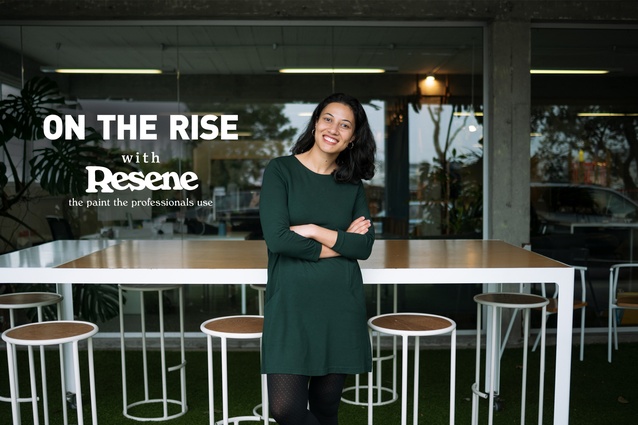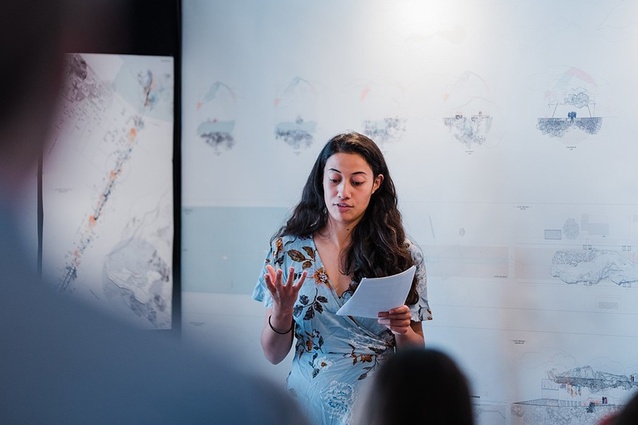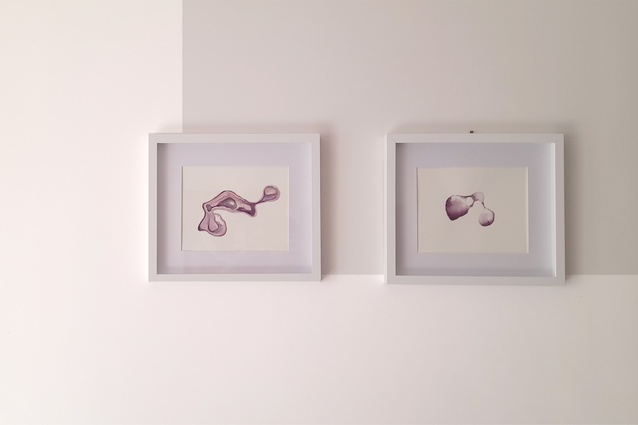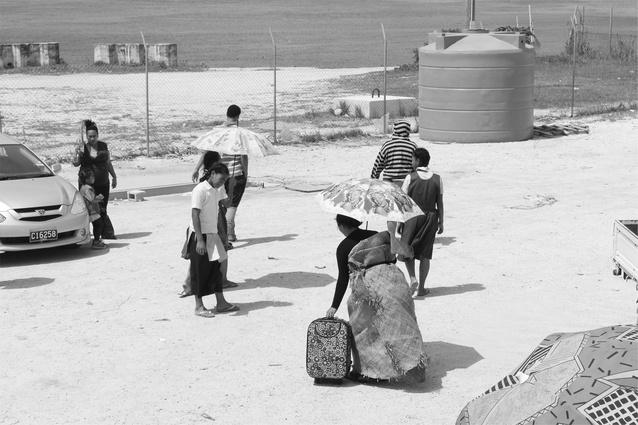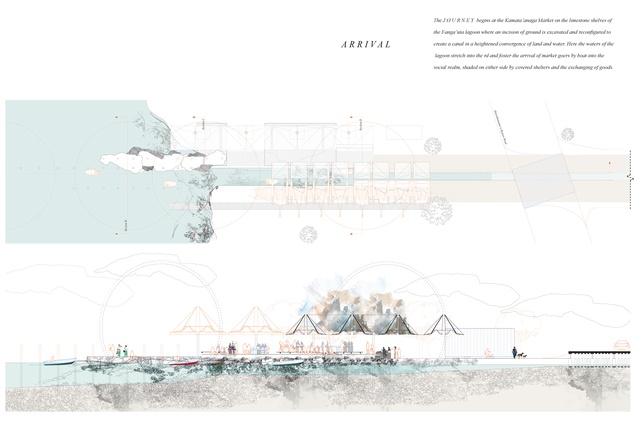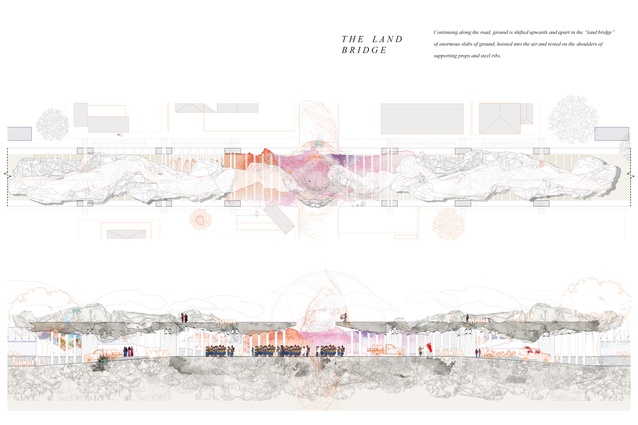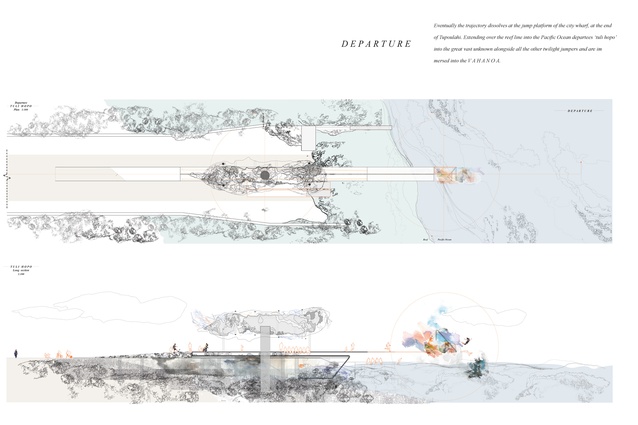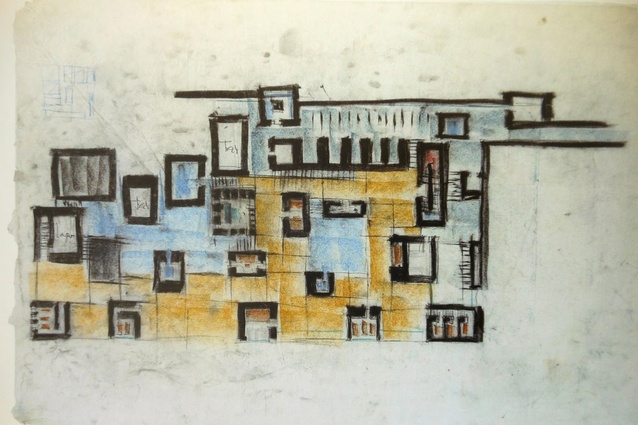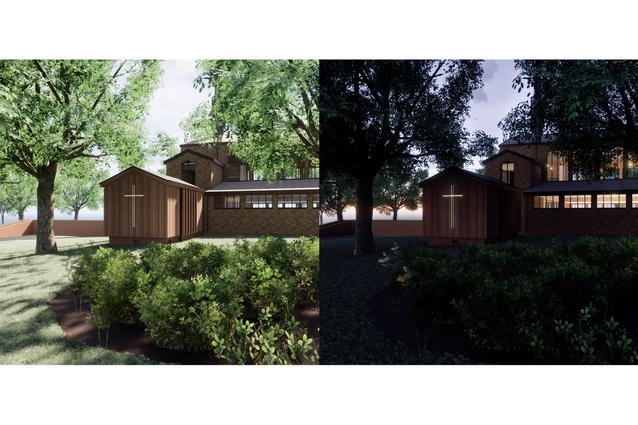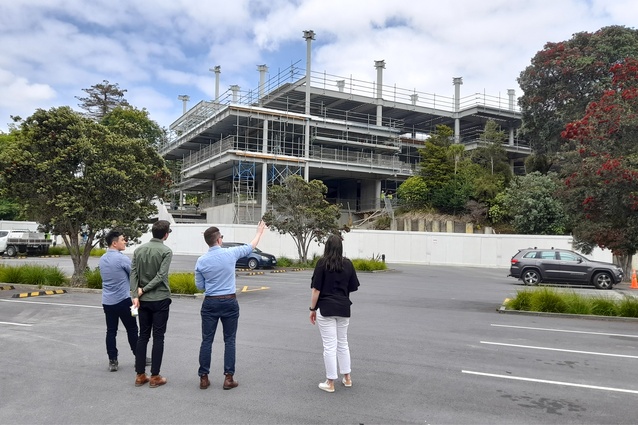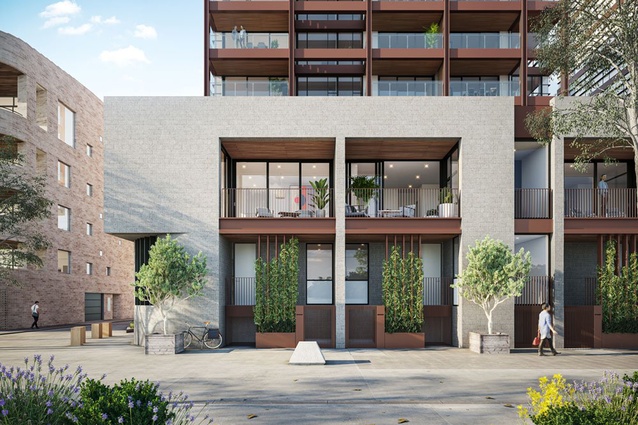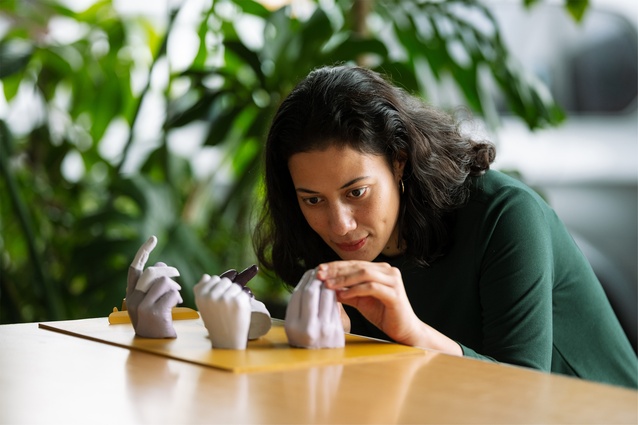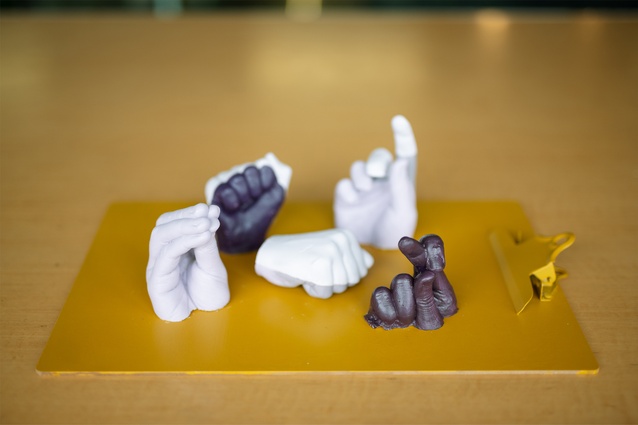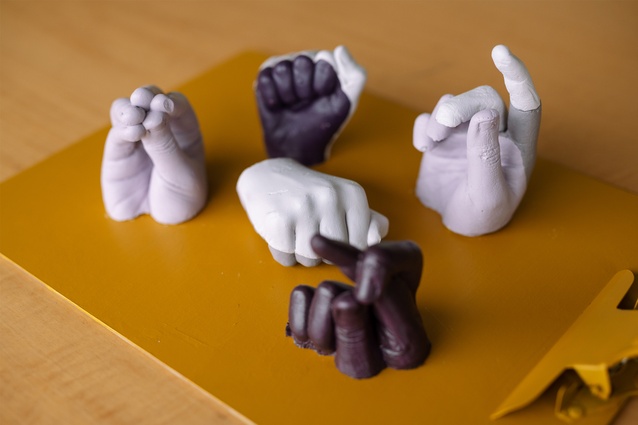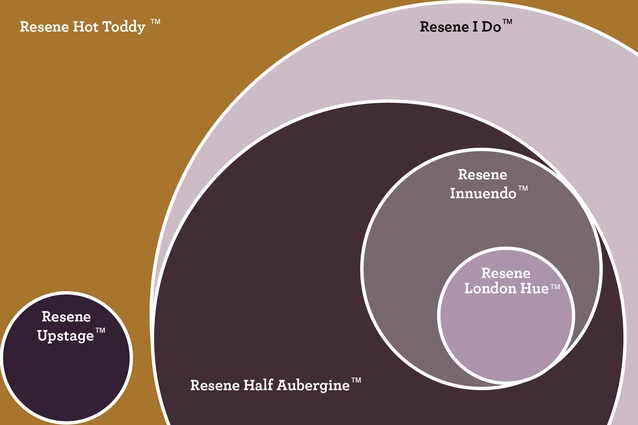On the Rise: Lusitania Vete
ArchitectureNow's On the Rise series, supported by Resene, profiles young designers from across the country who are shaping the future of the industry. This month, we talk to Auckland-based architectural grad Lusitania Vete of AHHA about her journey into practice, pandemic-induced creativity and what possibilities lie ahead.
Jacinda Rogers (JR): Were you always interested in architecture and how did your journey into architecture start?
Lusitania (Lusi) Vete (LV): I only had a vague understanding of what architecture really was until I started architectural studies at the University of Auckland. I did a careers quiz at high school, which first introduced me to the occupation of ‘Architect’ and came to study it through my interests in conceptual art and design. I’ve since discovered that a lot of my family are involved in the industry, but more so in Tonga.
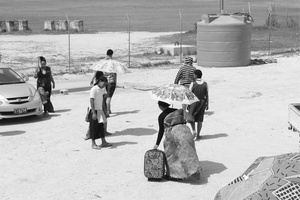
(JR): So, I gather you’re Kiwi-Tongan? Tell me about that and the photo you sent, was that taken in Tonga?
(LV): Yeah, it was. My parents were born in Tonga, and I was born in New Zealand. That photo was taken on a trip where I caught a 12-hour ferry (which they call the fast boat) between the main island and Vava’u. The ferry stops throughout the archipelago, transporting and transferring people, sometimes mid-ocean when there is no port. The photo I took captures a moment of arrival but also of return, as the woven mat worn by the woman disembarking the boat indicates she is on her way to a funeral. An ordinary moment in time, but to me, an embodiment of a culture of exchange and familial ties. That trip and the constant transient nature of life on the islands was the catalyst for my thesis project, Shifting Grounds.
(JR): What was your Shifting Grounds thesis exploring?
(LV): It was quite a personal take on doing a thesis. Visiting Tonga throughout the years I’ve always felt a difference between being a Tongan in Tonga versus being a Tongan in New Zealand. I’m sure a lot of first and second-generation people experience that. I wanted to explore what Tongan architecture might mean for future generations born outside of the country. I ended up with a speculative project that clasped onto one arm of the main island, Nuku’alofa, establishing a direct journey between the central lagoon (Fanga’uta) and the Pacific Ocean. At either end, there’s the ‘arrival’ scheme, which sees one begin their journey on the lagoon and the ‘departure’, which releases one from the scheme via a jump platform into the Pacific Ocean.
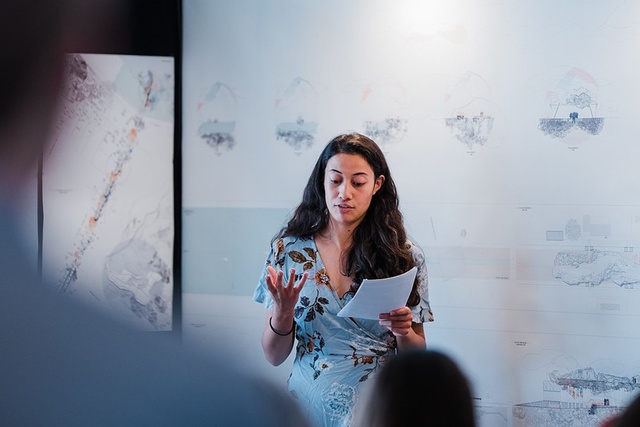
(JR): Tell me about the drawing process you implemented for your Shifting Grounds thesis. How did you come to that design language?
(LV): It developed from the design papers I had taken in the past, specifically with two tutors at the University of Auckland, Lynda Simmons and Jeremy Treadwell. I spent almost a whole year working on that series of drawings. In terms of my process, I would make a model and then photograph it, extract all the lines, and then recompose them at a different scale, colour, or density. This process was my take on being diasporic; mirroring a history of translating knowledge and values throughout different geographical locations and generations. In some ways, this drawing and making process was a very efficient way to work because I reused and recycled the same material from the beginning of the year till the end. So that was kind of my thesis year ‘hack’…(laughs).
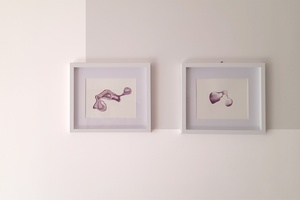
(JR): I saw you did the ‘Isolation’ series of watercolours. Have you always made art for yourself?
(LV): Yes, most art I create has been for myself. I like watercolours because there’s an element of uncertainty when painting with them; you can only control so much. I felt that was a parallel to what was happening in the world at the time, with the pandemic. I produced scores of watercolour paintings over lockdown to keep myself sane and I became more and more drawn to the colour purple throughout that period. I was telling someone the other day, you know, how Picasso had a blue period — It just felt like that. But with purple (laughs). It’s still going. People comment in the office about my assortment of purple clothing, matching bags, and accessories. I swear it’s unintentional!
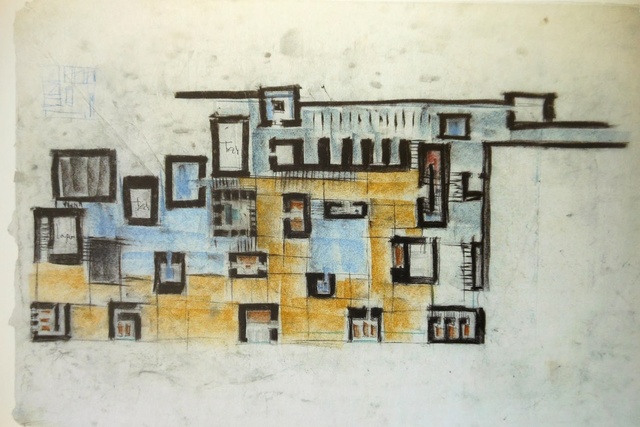
(JR): Are there any particular buildings that hold special architectural significance to you, and if so, why?
(LV): After I graduated from university, I travelled around Europe and visited Therme Vals by Peter Zumthor. It’s the building that every student eventually writes an essay on at architecture school. I’d always been in awe of Zumthor’s work and the material sensibility he brings to his buildings. I also love the sensation of being in water, so when the opportunity arose, I went on a literal pilgrimage to visit it. Being able to experience the architecture with all of my senses felt religious in some way. The way it illuminates and dramatises the act of bathing through the delineation of space has influenced how I view architecture. It’s one of those places where you walk in and can immediately tell that a good architect designed the space regardless of whether you are a student of the profession or not. One of the things I would eventually learn when I started in practice at Architectus was what it takes to bring sophisticated buildings like that to life.
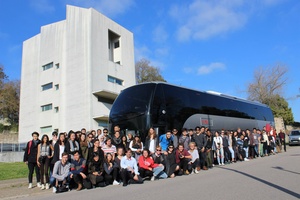
(JR): Was that your first experience seeing buildings overseas, or had you been on other trips prior?
(LV): I went on a six-week study tour covering the architecture of the Iberian Peninsula while I was in my third year. We probably toured twenty buildings a day and had the opportunity to see places like the Sagrada Familia, the Porto Faculty of Architecture and Casa de Musica, among others. That tour emphasized to me the importance of architectural education through travel. Studying architects and architectural works is very different from actually experiencing them in real life. Being able to form your own opinions through a tactile experience of architecture has so many benefits.
(JR): Did seeing some of the architecture in Portugal and Spain help you visualize other forms of architecture?
(LV): Definitely. One thing that stands out immediately in places like that is you can observe the breadth of history through the built fabric. There’s also a better understanding of it from the general public. In New Zealand, I believe there is still some mystery surrounding the public’s apprehension of what architecture is and what our profession actually does. In older and more heavily admired built environments that you might find in Europe, it’s interwoven into the social landscape. Coming back to New Zealand, you can see how relatively young the building industry is from what we can produce and have produced for the past couple of decades, given the building technology we have available here. That’s not to say that we haven’t created impressive architecture in New Zealand, I just think we still have a way to go to align building technology with design aspirations and create a better public perception of the value of good architecture and good architects. We have to take a serious look into the activation and curation of good public space for us to create a noticeable change in this area.
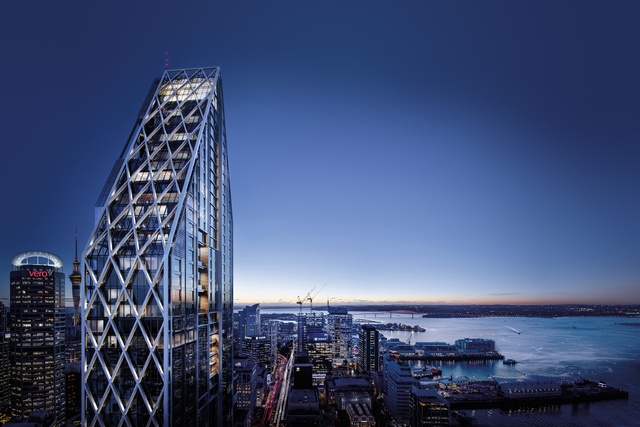
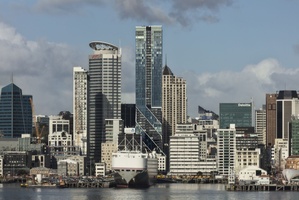
(JR): What direction do you envision New Zealand cities moving towards architecturally?
(LV): My family home is in Ponsonby, Auckland, where we have been from as early as the ‘60s when my dad first emigrated to New Zealand. We’ve seen the suburb and the rest of the inner city change in identity within that time, yet still remain recognisable to the built environment that existed 50 years ago. From this childhood base, I’ve moved closer to the heart of the city centre to where I am now. Living in the CBD, the changes and growth of the built environment are more drastic with typologies like the Pacifica completed and Seascape apartments under construction — the latter set to be the tallest residential tower in New Zealand. Right now, exciting as well as problematic things are happening in our city centres and inner-city suburbs which will only escalate with the recent changes to the Resource Management Act. Amongst this, different ways of living are being experimented with. I think we are slowly transitioning past people only having an appetite for standalone houses, and it still seems as if high-rise living and the creation of active public space surrounding inner-city apartments are in a test phase.
(JR): We’re currently amidst a housing crisis and are on the verge of seeing new intensification legislation come into place. What are your thoughts on this?
(LV): I hope people are looking for new and different ways to live other than what has been typical in New Zealand. I know I am definitely on that train. I grew up in a villa and will never live in one again (laughs)… Maybe because I’ve studied and begun to practice architecture, the possibilities for better physical, social, and economic environments seem more open to me. Unfortunately, many things have to catch up to that, like policies, consenting, financing and buy-in from the general public. Still, considering the atrocious housing market, I think it’s worth exploring all possibilities, especially in Auckland. There’s always a trade-off when wanting a build to be fast and under a certain budget. On one hand, you have people keen to get into a house, and it’s positive to see different building schemes promoting affordability. On the other hand, it’s disappointing to see buildings that negatively impact the environment and are unforgivingly towards the needs of their occupants as this discredits the profession in the eyes of the public. Perhaps this issue is not so important in the scheme of things, i.e., with a national housing crisis, global climate emergency and pandemic going on? However, I would argue this makes it more important than ever to address.
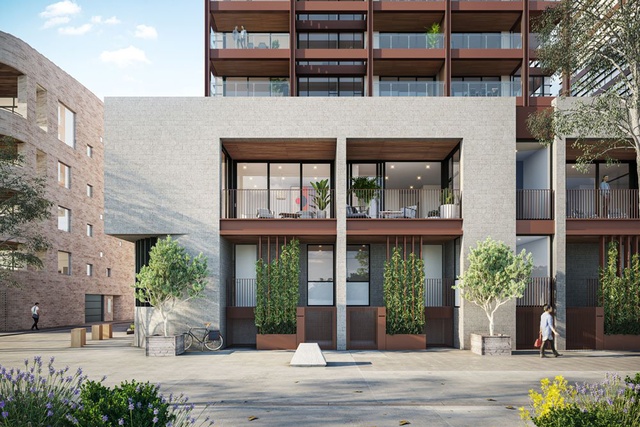
(JR): How would you like to see architecture evolve and change heading into the future? Is there a particular area that you’re most passionate about seeing into fruition?
(LV): I would like to see architecture in New Zealand be a little more experimental. It’s hard to say, considering the need to house people quickly — but I think there is room for both of those things. I would like to see the New Zealand industry excel in sustainable and innovative architecture as a country that prides itself on ingenuity and dedication to the natural environment. I see sustainability as being synonymous with cultural and indigenous values and hope for the future that they weren’t treated as separate factions of design development, but instead as holistic necessities to the architectural success of the project. Instead of checking boxes, let’s explore what buildings can contribute by asking what sustainability means in the context. Because it can mean a lot of different things, like cultural, climate or social sustainability, for instance. We are just beginning with the Architects Declare initiative that many practices signed. Still, instead of just signing things, we should look to solidify this ideology into the foundations of how we design and consent all buildings and measure their success. This progressive and positive mentality toward social and environmental sustainability in the design and construction process is something AHHA has built their ethos around and is one of the significant reasons I chose to join the practice. Net zero is old news. It’s net-positive vibes only.
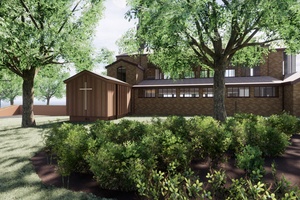
(JR): I want to talk about some of your past work. You worked on an extension for St Kentigern School’s chapel. What was your experience of designing that?
(LV): The chapel extension was from my time at Architectus and was one of the smallest projects that I’ve ever worked on, but by no means the least significant. With a smaller project, you get to do more of the traditional architect’s role and see everything come together in a shorter period of time. So even though it was a simple project, it was fulfilling as a grad because I was able to see the project through from start to finish. Being my first foray into the whole process, afterwards, I felt more confident in terms of my understanding of architecture and the industry in general.
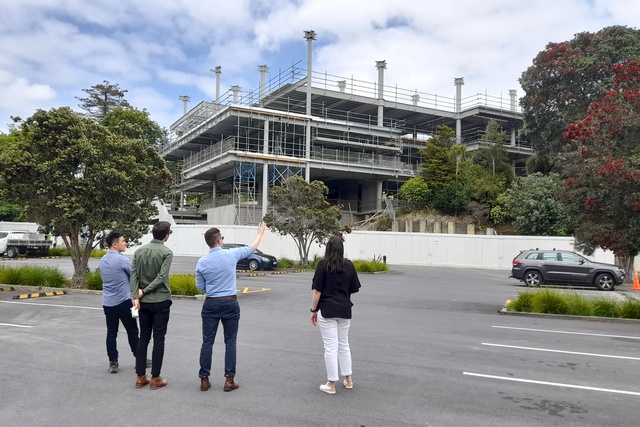
(JR): How did working on projects like St Kentigern Girls’ School and Catalina Bay Apartments compare?
(LV): Both are large buildings in contrast with the earlier project where it was just an architect and myself. Here, I worked in big teams on the architectural side, and also the structural and services engineering side. That’s what makes significant buildings come alive: the coordinated effects of a whole team. There’s so much value and importance in learning how to work in a team effectively and a huge amount of added effort to keep everyone on the same page. I was lucky to have worked on both of these projects at Architectus under project architects and senior graduates who had completed similar successful projects in the past. I learn faster in a team, so those bigger projects were really integral learning points in my short career thus far.
(JR): Is there a type of building that you prefer to work on? Or is it nice to have a variation of building types/scales to work on?
(LV): Once I started working on more housing projects, those have become the most interesting to me. The whole typology is interesting with standalone houses versus medium density, and high density… there are so many ways to live, I guess. But there are a lot of boundaries within the typology as well. When it comes to people inhabiting the space and that being their home, there are more limitations in what you can do — but at the same time, it always presents a good design challenge. Since I started doing more housing projects at Architectus and now at AHHA, it relit my academic fire and I suddenly wanted to buy architecture books I had previously thought were way too expensive (laughs). I developed a near obsession with exploring what’s possible by reading about what other architects had done and how other people live overseas. Just because we have done things in the same way in New Zealand for a long time does not mean we shouldn’t experiment with new pathways and new ways to live well.
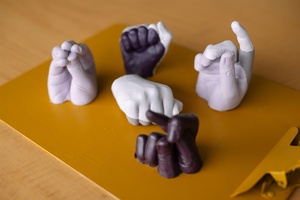
(JR): Lastly, tell me about your mood board. Where did the concept come from and what did you want to express with your choice of colours?
(LV): While purple has been associated throughout history with royalty and wealth, it also has connotations of mystery and uncertainty. During the early days of the pandemic, I felt a pull towards the colour purple, and soon it became the colour filter over my own personal, ‘new normal.’ Like Picasso’s paintings in his blue period, purple hues found themselves in my watercolour paintings, sketches and even my wardrobe. With my mood board I had the intention of exhibiting multiple tones of each purple hue with light and shadow play, and using various hand poses to personify the colours seemed fitting, given the obsession with hand washing and bodily effects in recent times.
AHHA is a multi-disciplinary design collective based in Auckland and Dunedin. They create built environments with positive social and environmental impact. For more information, head to their website.
See more from the On the Rise series here.

